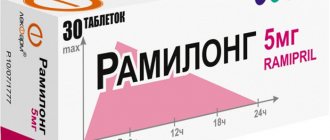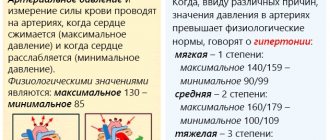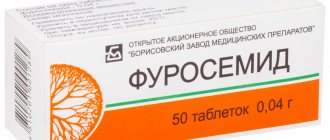Ketorol is an effective pain reliever. The medicine belongs to the group of anti-inflammatory non-steroidal drugs. In addition to the analgesic effect, the drug reduces inflammation and swelling. In addition, ketorol, the instructions indicate this, has antipyretic properties.
Composition, forms and effects of the drug
The strong analgesic effect of the drug is provided by the main active substance - ketorolac tromethamine. Other components may vary depending on the manufacturer, so be sure to read the instructions.
The effect after taking the medicine is comparable to the effect of morphine. But at the same time, ketorol is a safer drug to use. The product can be used to combat different types of pain, the causes of which are any pathological conditions. It is used to eliminate symptoms and to treat specific diseases that are accompanied by swelling and fever.
The drug is produced in the form of:
- Tablets in a green soluble shell (with the amount of active substance - 10 mg).
- Transparent solution for intramuscular and intravenous administration (with an amount of active substance -30 mg/ml).
- Transparent, homogeneous gel (2%).
The most popular is the tablet form. After taking the drug, the active substance is completely absorbed into the gastrointestinal tract in the shortest possible time. Wherein:
- The maximum concentration in the blood is reached after an hour.
- Antipyretic and analgesic effects are observed after 30 minutes.
- Fatty foods slow down the absorption of the active substance.
Instructions for use KETOROL INSTA
Prescription for patients with impaired liver function
:
- prescribed with caution. While taking ketorolac, liver enzyme levels may increase. If there are functional abnormalities in the liver while taking ketorolac, a more severe pathology may develop. If signs of liver pathology are detected, treatment should be stopped.
Patients with renal failure or a history of kidney disease
:
- ketorolac is prescribed with caution.
Food
:
- reduces the rate, but does not affect the volume of absorption of ketorolac.
Impact on laboratory test results
:
- it is possible to increase bleeding time when studying coagulation parameters.
Since a significant proportion of patients who are prescribed ketorolac develop side effects from the central nervous system (drowsiness, dizziness, headache), it is recommended to avoid performing work that requires increased attention and quick reaction.
Children
Not used in children
Risk during childbirth:
- may adversely affect fetal circulation and suppress uterine contractions.
Impact on the ability to drive vehicles and operate machinery
:
- During the treatment period, care must be taken when driving vehicles and engaging in other potentially hazardous activities that require increased concentration and speed of psychomotor reactions.
Precautionary measures
The maximum duration of use, including the use of parenteral forms, should not exceed 5 days
.
Gastrointestinal bleeding, ulceration and perforation
.
Gastrointestinal bleeding, ulceration or perforation, which may be fatal, has been reported with the use of NSAIDs at any time from the start of treatment. Such bleeding can develop with or without warning symptoms or in the case of severe disorders of the digestive tract in the anamnesis. The risk of severe gastrointestinal bleeding depends on the dosage of the drug. This, in particular, applies to elderly patients who use ketorolac in an average daily dose above 60 mg. For these patients, as well as for patients who are concomitantly using low doses of acetylsalicylic acid or other drugs that may increase gastrointestinal risk, combination treatment with protective agents (eg, misoprostol or proton pump inhibitors) should be considered. Ketorol Insta should be used with caution in patients receiving concurrent medications that may increase the risk of ulceration or bleeding, such as oral corticosteroids, selective serotonin reuptake inhibitors, or antiplatelet agents such as acetylsalicylic acid. If gastrointestinal bleeding or ulceration occurs in patients receiving Ketorol Insta, the course of treatment should be discontinued.
Respiratory dysfunction.
Caution is required when using the drug in patients with bronchial asthma (or with a history of asthma), since NSAIDs have been reported to accelerate the onset of bronchospasm in such patients.
Influence on the kidneys
.
Prostaglandin biosynthesis inhibitors (including NSAIDs) have been reported to have nephrotoxic effects. The drug should be prescribed with caution to patients with impaired renal, cardiac, or liver function, since the use of NSAIDs may lead to deterioration of renal function. Patients with mildly impaired renal function are prescribed lower doses of ketorolac (those that do not exceed 60 mg per day intramuscularly or intravenously), and the renal condition of such patients should be carefully monitored. As with other drugs that inhibit prostaglandin synthesis, increases in serum urea, creatinine, and potassium have been reported during use of ketorolac tromethamine, which may occur after a single dose.
Cardiovascular, renal and liver disorders
.
The drug should be used with caution in patients with conditions that lead to a decrease in blood volume and/or renal blood flow, when renal prostaglandins play a supporting role in ensuring renal perfusion. In these patients, renal function should be monitored. The volume reduction should be corrected and serum urea and creatinine levels and the volume of urine excreted carefully monitored until the patient becomes normovolemic. In patients on renal dialysis, the clearance of ketorolac was reduced by approximately half the normal rate, and the terminal half-life was approximately tripled. Patients with impaired liver function due to cirrhosis did not have any clinically significant changes in ketorolac clearance or terminal half-life. Borderline increases in one or more liver function tests may occur. These abnormalities may be temporary, may remain unchanged, or may progress with continued treatment. If clinical signs and symptoms indicate the development of liver disease or if systemic manifestations are observed, Ketorol Insta should be discontinued.
Fluid retention and swelling
Fluid retention and edema have been reported during use of ketoroalc and should be used with caution in patients with cardiac decompensation, hypertension, or similar conditions.
Cardiovascular and cerebrovascular effects
.
There is currently insufficient information to assess such a risk for ketorolac tromethamine. Patients with uncontrolled hypertension, congestive heart failure, diagnosed coronary artery disease, peripheral arterial disease and/or cerebrovascular disease should be under medical supervision.
Systemic lupus erythematosus and mixed connective tissue diseases
.
In patients with systemic lupus erythematosus and various mixed connective tissue diseases, the risk of developing aseptic meningitis increases.
Dermatological
.
Ketorol Insta should be discontinued at the first signs of a skin rash, damage to the mucous membranes or any other signs of hypersensitivity.
Anaphylactic (anaphylactoid) reactions
.
As with the use of other NSAIDs, anaphylactic (anaphylactoid) reactions (including anaphylaxis, bronchospasm, flushing, rash, hypotension, laryngeal edema, Quincke's edema) may occur in patients who have no or no history of hypersensitivity to aspirin, other NSAIDs or ketorolac. This set of symptoms may also occur in individuals with a history of bronchospastic reactivity (eg, asthma) and nasal polyps. Anaphylactoid reactions, such as anaphylaxis, can be fatal. Therefore, ketorolac should not be taken by patients with a history of asthma, and by patients with complete or partial nasal polyp syndrome, angioedema and bronchospasm. If anaphylactoid reactions occur, seek emergency medical attention.
Hematological effects
.
Patients with bleeding disorders should not be prescribed Ketorol Insta. Patients receiving anticoagulant therapy may have an increased risk of bleeding if ketorolac is used concomitantly. Patients receiving other drugs that may affect the rate of bleeding control should be carefully monitored when ketorolac is prescribed to them. In controlled clinical trials, the incidence of significant postoperative bleeding was less than 1%. Ketorolac inhibits platelet aggregation and prolongs bleeding time. In patients with normal bleeding times, the duration of bleeding increased, but did not exceed the normal range of 2-11 minutes. In contrast to the long-term effects resulting from the use of acetylsalicylic acid, platelet function returns to normal within 24-48 hours after discontinuation of ketorolac. Ketorolac should not be prescribed to patients who have undergone surgery with a high risk of bleeding or incomplete control of bleeding. Caution should be used if mandatory bleeding control is critical. Ketorol Insta is not an anesthetic and does not have sedative or anxiolytic properties; therefore, it is not recommended as a premedication before surgery to maintain anesthesia.
Indications and contraindications for use
In order not to cause harm, it is important to know what ketorol helps with. Most often, ketorol, the instructions for use confirms this, is used as a symptomatic remedy to relieve headaches, dental and menstrual pain, as well as pain in the joints. In complex therapy, the drug is prescribed for the development of cancer and in the postoperative period.
The medicine is indicated to alleviate conditions in the following pathologies:
- Rheumatoid diseases.
- Spinal diseases and radiculitis.
- Ligament ruptures and muscle sprains.
Ketorol, like any non-steroidal drugs, is prohibited for use in the presence of diseases of the gastrointestinal tract. Otherwise, the risk of gastric bleeding increases. The drug is not prescribed to patients under 16 years of age or during pregnancy and lactation. You should stop using the medicine if you are hypersensitive to the components of the drug, as well as if you have the following pathologies:
- Bronchial asthma.
- Hyperkalemia.
- Heart failure.
- Liver and kidney diseases.
- Stroke.
There are other diseases for which the doctor recommends taking the drug with caution. These are chronic hypertension, diabetes mellitus, various nervous system disorders, etc.
Ketorol, for which a prescription is required, should not be taken with a number of other medications:
- Pentoxifylline.
- Acetylsalicylic acid.
- Anticoagulants.
- Lithium salts.
- Probenecid.
When taking the drug simultaneously with alcoholic beverages, the risks of intoxication of the body increase.
Ketorol®
The frequency of side effects is classified depending on the frequency of occurrence: often - (1-10%), sometimes (0.1-1%), rarely (0.01-0.1%), very rarely (less than 0.01% ), including individual messages.
From the digestive system:
often (especially in elderly patients over 65 years of age with a history of erosive and ulcerative lesions of the gastrointestinal tract) - gastralgia, diarrhea; less often - stomatitis, flatulence, constipation, vomiting, feeling of fullness in the stomach; rarely - nausea, erosive and ulcerative lesions of the gastrointestinal tract (including with perforation and/or bleeding - abdominal pain, spasm or burning in the epigastric region, melena, vomiting like “coffee grounds”, nausea, heartburn and others), cholestatic jaundice, hepatitis, hepatomegaly, acute pancreatitis.
From the urinary system:
rarely - acute renal failure, lower back pain with or without hematuria and/or azotemia, hemolytic-uremic syndrome (hemolytic anemia, renal failure, thrombocytopenia, purpura), frequent urination, increased or decreased urine volume, nephritis, edema of renal origin.
From the senses:
rarely - hearing loss, ringing in the ears, visual impairment (including blurred vision).
From the respiratory system:
rarely - bronchospasm, shortness of breath, rhinitis, laryngeal edema.
From the central nervous system:
often - headache, dizziness, drowsiness; rarely - aseptic meningitis (fever, severe headache, convulsions, stiff neck and/or back muscles), hyperactivity (mood changes, anxiety), hallucinations, depression, psychosis.
From the cardiovascular system:
less often - increased blood pressure, rarely - pulmonary edema, fainting.
From the hematopoietic organs:
rarely - anemia, eosinophilia, leukopenia.
From the hemostasis system:
rarely - bleeding from a postoperative wound, nosebleeds, rectal bleeding.
From the skin:
less often - skin rash (including maculopapular rash), purpura, rarely - exfoliative dermatitis (fever with or without chills, redness, thickening or peeling of the skin, swelling and/or tenderness of the tonsils), urticaria, Stevens-Johnson syndrome, Lyell's syndrome.
Allergic reactions:
rarely - anaphylaxis or anaphylactoid reactions (change in facial skin color, skin rash, urticaria, skin itching, tachypnea or dyspnea, swelling of the eyelids, periorbital edema, shortness of breath, difficulty breathing, heaviness in the chest, wheezing).
Other:
often - swelling (face, legs, ankles, fingers, feet, weight gain); less often - increased sweating, rarely - swelling of the tongue, fever.
Dosage and recommendations for treatment
In the postoperative period, tablets are usually prescribed, the price of which is affordable. This especially applies to cases where the instructions for use exclude ketorol injections against the background of certain consequences of operations. To relieve pain of any etiology, take one tablet. In case of intense severe pain, repeated use is allowed up to 4 times a day with a break of 4-6 hours. The duration of treatment is 5 days.
Ketorol tablets, the instructions for use emphasize this, should not be taken for any stomach problems. In this case, you need to purchase ketorol injection ampoules. In particular, intramuscular administration is indicated for persistent vomiting or difficulty swallowing. When they ask ketorol injections what they help with, experts often indicate radiculitis. In this case, the pain caused by this pathology can be dealt with quickly. Injections can be repeated with a break of 4 hours.
Ketorol gel is applied in a thin layer to clean and dried skin in areas of pain. Then rub in with soft massage movements. Procedures can be repeated 3-4 times a day until pain is relieved. The break between them is at least 4 hours. The duration of use of the gel is no more than 10 days.
Ketorol Express, 20 pcs., 10 mg, tablets dispersible in the oral cavity
The simultaneous use of ketorolac with acetylsalicylic acid or other NSAIDs, calcium preparations, glucocorticosteroids, ethanol, corticotropin can lead to a significant increase in the risk of adverse reactions, including the formation of gastrointestinal ulcers and the development of gastrointestinal bleeding.
When ketorolac is used simultaneously with other NSAIDs (including COX-2 inhibitors), fluid retention, cardiac decompensation, and increased blood pressure may occur.
Concomitant use of ketorolac with indirect anticoagulants, thrombolytics, antiplatelet agents, cefoperazone, cefotetan and pentoxifylline increases the risk of bleeding.
Probenecid reduces the plasma clearance and volume of distribution of ketorolac, increases its concentration in the blood plasma and increases its T1/2.
The combined use of ketorolac with valproate causes disruption of platelet aggregation.
When using ketorolac with other nephrotoxic drugs (including gold preparations), the risk of developing nephrotoxicity increases.
Combined use with paracetamol increases the nephrotoxicity of ketorolac.
Drugs that block tubular secretion reduce the clearance of ketorolac and increase its concentration in the blood plasma.
The combined use of ketorolac with methotrexate increases the hepato- and nephrotoxicity of methotrexate. The combined use of ketorolac and methotrexate is possible only when using low doses of the latter. The clearance of methotrexate may decrease (it is necessary to monitor the concentration of methotrexate in the blood plasma).
With the use of ketorolac, it is possible to reduce the clearance of lithium, increase its concentration in the blood plasma and increase the toxic effect of lithium. Simultaneous use with lithium salts is contraindicated.
Ketorolac reduces the effect of antihypertensive and diuretic drugs (the synthesis of prostaglandins in the kidneys is reduced).
Ketorolac enhances the effect of narcotic analgesics. When combined with opioid analgesics, the doses of the latter can be significantly reduced.
Ketorolac enhances the hypoglycemic effect of insulin and oral hypoglycemic drugs, and therefore it is necessary to recalculate the dose of these drugs.
Ketorolac increases the plasma concentrations of verapamil and nifedipine.
Concomitant use of NSAIDs and mifepristone may reduce the effectiveness of mifepristone. NSAIDs are not recommended for use within 8-12 days after using mifepristone.
Concomitant use of NSAIDs and cyclosporine increases the risk of nephrotoxicity.
The simultaneous use of NSAIDs and quinolone antibiotics increases the risk of developing seizures.
Concomitant use of NSAIDs and tacrolimus increases the risk of nephrotoxicity.
Concomitant use of NSAIDs and zidovudine increases the risk of hematological toxicity.
When used simultaneously with digoxin, ketorolac does not interfere with the binding of digoxin to plasma proteins. Therapeutic concentrations of digoxin do not affect the binding of ketorolac to plasma proteins.
Antacids do not affect the absorption of ketorolac.
Myelotoxic drugs increase the manifestations of hematotoxicity of ketorolac.






